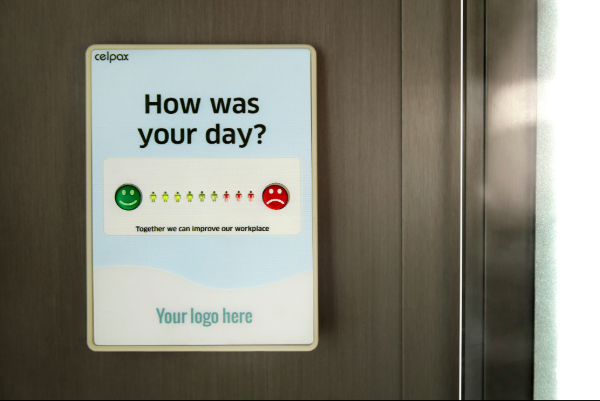Summary
Culture can quietly make or break your business, yet it’s often overlooked. As an HR consultancy, we’ve seen how “culture rot” starts small: ignored behaviours, unclear values, or unmanaged teams. Without someone shaping culture, trust and engagement erode fast. This article reveals the early signs, and how business leaders can stop it before it spreads.
Culture is not an HR manual or a framed mission statement on the wall; it is the unwritten rules of behaviour. What is encouraged, what is tolerated, and what is unacceptable?
When a CEO is running at 100 mph, focused on strategy, funding, and growth, it's easy to overlook this intangible asset.
The truth is that culture is never static, it's a living, breathing entity that is either being actively cultivated or slowly being lost. And the "rot," as we’ll call it, is the default state if left unattended. It comes from letting small issues pile up, which eventually breaks down trust and makes people feel disengaged and unsafe at work.
Why Does the “Rot” Start?
The root cause isn't just ignoring people; it's fundamental problems in your business model, or bad leadership. At The HR Consultants, we see this every day.
1. The Disconnect from Core Values
Core values are your company's guide. Culture rot starts when these values are just words on a poster. For example, if "Integrity" is a value, but you praise a high performer who is a known bully in the workplace, you're teaching everyone that the only thing that truly matters is getting results.
If leaders' behaviour doesn't match the values, employees become cynical and realise the company's words are meaningless.
2. The Normalisation of Busyness
One of the most common cultural pitfalls is rewarding "busyness" over "results." When long hours, late emails, and a sense of constant rush are glorified, a culture of burnout becomes the norm. Employees who work late feel validated, while those who are efficient and leave on time may feel judged or pressured to conform to the unhealthy standard.
This not only drives away your most efficient workers but actively tells everyone that their personal well-being is secondary to the company’s need to appear busy.
3. Managerial Weakness
Culture is set by your front-line managers' actions. A manager who fails to coach, talk honestly, or show emotional intelligence is directly responsible for letting the rot set in.
If you don't train, support, and hold managers accountable for their team's culture, the rot will spread. The bond between an employee and their manager is key to boosting engagement. If that relationship is toxic, free perks won't save your culture.
Beyond the Obvious: The Hidden Signs of “rot”
As a CEO, don't wait for late-stage problems like high absenteeism (sick days) or disengaged staff (quiet quitting). These are the crisis points. You must instead watch for the subtle, early warning signs of culture rot before they become visible to everyone.
4. The Silence in the Room
When in-person and online meetings become transactional, and people stop sharing challenging or innovative ideas, that’s a red flag. Silence is the sound of fear.
When psychological safety is low, employees are afraid to speak up, flag a problem, or question a decision, believing they might be ridiculed or penalised. This results in the loss of critical information, missed opportunities, and a dangerous "yes-culture" where no one pushes back against a bad idea. If your team is too quiet, it’s not because they’re all perfectly aligned; it’s because they’re protecting themselves.
5. Cynicism and Sarcasm
Look out for passive resistance, that bad mood that infects the office. It shows up as sarcasm, eye-rolling, or mocking new ideas. When employees are this cynical, they no longer believe management can fix things. They do the work, but with a bad attitude. This toxic energy quickly leads to gossip and divided teams.
6. Resource Wars and Hoarding
A healthy culture is built on support and collaboration. When culture rots, teams start to secretly compete and fight over limited resources (like budget or leadership attention).
This unhealthy competition shows employees don't trust leaders to provide what's needed; they believe they can only win if another team loses. Collaboration collapses first, creating silos and killing new, cross-team ideas.
Stopping the Rot: A Proactive CEO Playbook
The good news: you can stop culture rot. But it takes sustained, consistent commitment from leaders, not one big fix.
7. Make Culture a Non-Negotiable Agenda Item
Stop treating culture like an abstract idea that only HR handles. Culture is the foundation of your business model. You must measure it, discuss it, and fund it with the same focus you give your budget.
- Routine Culture Check-ins: Skip the long, annual survey. Run small, anonymous pulse checks (just 3-5 simple questions monthly) to get real-time data on how people feel, their stress levels, and their workload.
- The Leader Check: Every key leader must show exactly how their team is living the core values. If they can't, both they and the CEO have a problem.
8. Elevate and Empower Your Managers
Managers are the key to culture; they either build it up or spread the rot.
- Train for Empathy, not just efficiency: Teach managers how to run great 1-on-1s, coach for both results and well-being, and have tough, honest talks. Their focus must shift from just output to the person.
- Hold Them Accountable: Make culture metrics (like pulse check scores) a core part of their performance review. If their team is burned out or checked out, the manager is failing at their job, even if their team hits its financial goals.
9. Prioritise Psychological Safety
Psychological safety is the best way to fight culture rot. It means people believe they won't be punished or humiliated for sharing ideas, raising concerns, or making a mistake.
- Reward the Messenger: When staff or managers point out a problem, publicly thank them for their courage (even if the news is bad). This shows that raising issues is valued.
- Model Vulnerability: Leaders must openly admit their own mistakes and share what they learned. This signals that being imperfect is human and your company values learning over blame. Find out more about our Leadership and Management Training.
10. Address the "Toxic A-Player"
The "Toxic A-Player" is the worst nightmare: a top performer who is also a bully. Tolerating them is telling your staff that results excuse bad behaviour, quickly spreading culture rot. A CEO must remove this person. Firing them might briefly hurt a metric, but the relief it brings is a huge cultural win that instantly restores trust.
Constant Vigilance is the Price of a Healthy Culture
Culture rot is the hidden cost of growth and a quiet killer for any great business. It thrives on neglect, hypocrisy, and fear. As a CEO, your choice is simple: wait for a full-blown crisis (high turnover, bad reputation, huge cost) or give your culture constant attention. Culture isn't a project; it's a daily practice of leadership, listening, and holding everyone (including yourself) accountable. Invest in your people now, before this slow rot causes an unfixable, company-wide collapse.
If this struck a chord, it might be time for an honest conversation about where your culture really stands.
Book a chat with our team and our HR Consultants will help you diagnose what’s really happening beneath the surface and create a practical plan to rebuild trust and engagement.















